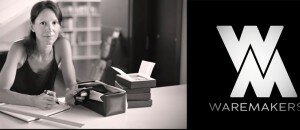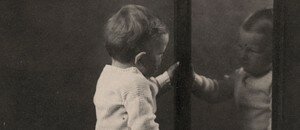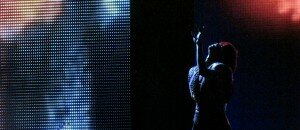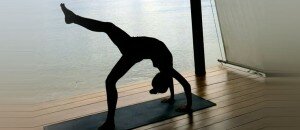Jordan Wayne Lee has an incredible story. We all have a limited amount of time here on earth, Jordan realizes that, and takes every day on with that in mind. He has an amazing story to tell! Check it out below…
When did you start shooting photos?
I started taking photos when I was about 16 years old. I was playing in punk rock and hardcore bands and doing a lot of skateboarding. I was doing photography for bands and skaters around town.
I didn’t have good equipment and this was all pre-Google so I couldn’t go online and find out how to do photography correctly. I just kind of dove in and it forced me to be experimental. I think everything at that timge was experimental for me – not just photography but music and skateboarding too.
Jordan Wayne Lee:
My early exploration of photography was grounded in curiosity and experimentation. Later on, I focused on developing the foundational skills needed; which translated to other types of art (typography, web, print). I think the exploration helped keep my interest and curiosity strong. I didn’t get bored and I continued exploring different ways I could photograph.
What type of equipment do you use?
I shoot with a Nikon D60 SLR. I have a variety of lenses. I also use studio lighting on location and in studio for various shots with models or product shots.
the same thing that haunts me is the same thing that gets me out of bed everyday to pursue my art and creativity. Each day is a new gift and I want to express myself, reflect the beauty of nature, and hopefully it inspires others to do the same.
Why are you passionate about what you do?
To be completely honest, I shouldn’t be alive. I have this hereditary disease where my body can’t make white blood cells, so I rely on medicine to stay alive and keep from getting seriously sick. I’m lucky. Very lucky. I refuse to let this keep me from conquering my goals. But, the same thing that haunts me is the same thing that gets me out of bed everyday to pursue my art and creativity. Each day is a new gift and I want to express myself, reflect the beauty of nature, and hopefully it inspires others to do the same. It’s a big world and we only get one chance to enjoy it – might as well get after it every day. It’s fulfilling to know that I’m seeking after this inner desire to capture the works through photography and design. I do it for myself because I’m not sure how long I’ll be here, and at the same time, I want to pour my heart and spirit into my work in hopes that it connects and inspires someone else, the way I’ve been inspired through others. It’s recipricoal – I just feel like I’m on a shorter runway before taking off.
My passion doesn’t stop with photography. I’ve been a designer for over ten years. I take things I’ve learn from design and apply it to my photography and vice versa. I try to find the connections between disciplines; from color palettes, composition, space, color theory, contrast, grids, rule of thirds, the golden ratio – all of these principles play various roles and translate across disciplines. I am constantly learning and understanding and applying these things to all of my work.
How did you overcome your own doubts and the doubts of other people?
There is a saying I really like: “Courage is fear holding on a minute longer.” – George S. Patton. I think that my self doubt stemmed from fear. I was afraid to share the way I see the world. I was afraid to admit how precious I view life and art because of personal struggles. I was afraid of failure.
I listened to this inner voice of fear until one day I found myself listening to a scientist who worked on Planet Earth give a talk while I was at Summit Series. He shared his pursuit of impacting the world and making changes on a global scale. At that point, I realized that I have nothing to lose. Courage in my work allows others to be more receptive. It’s a beautiful thing.
What were some bumps you hit to get where you’re at now?
I was completely broke at one point early in my career. I sold almost everything I owned to pay for rent, even my guitars. I was struggling to make ends meat. I learned a lot about myself and the one thing that kept me going was my passion to do photography and design. I never gave up. I was young and had no idea how to run a business, but I quickly learned and figured things out. It was a hard and valuable lesson to learn but really put many things into perspective. My gut told me to keep going and keep pursuing my passion. I never lost the drive to keep moving forward. I could have given up, gotten a boring day job, or went back to school; but I didn’t. I pushed on and worked harder and things began to turn around. About this same time I won an Emmy for some past work and that is what really gave me the motivation to keep going the direction I was heading. A few times I took on projects and clients whom I worked for because I needed the money. I made this mistake early on and learned some valuable lessons about doing this. This type of work might pay the bills, but my overall happiness was at an all-time low and my stress was at an all time high. Working with clients who don’t understand the full value and capacity of your work won’t value your opinion, experience, or knowledge with what you do. These clients were the hardest people to work with. Recognize the red flags and don’t make the mistake I did by taking on work simply for the paycheck. Between fast, cheap and good; a client can realistically only have two of those things to have the end product be of any value. It’s important to work with people who understand this.
It’s important to set a work/life balance. I found myself working all the time. I missed out on a lot of things with friends and family because I chose to work. It wasn’t because I was always busy, but I needed to manage my time much better and have a work/life balance. Set expectations and boundaries with clients and projects. Don’t answer emails or phone calls past 9pm – unless the project is on fire and burning to the ground. Wake up early. Exercise. Check email periodically. Set a project timeline and creative process. Be willing to adjust. Provide room for revisions and feedback.
What are some things you did wrong in the past that you can share with people?
I don’t believe success is about always doing the right things all the time, but, doing the wrong things early and learning from them quickly. I’ve done a lot of things wrong. My early freelancing career was a mess. I had no idea what I was doing. I had no clue how to run a business or manage projects. It was one of the hardest times I’ve ever experienced, not because of my work but because I didn’t have the business savvy to keep everything moving. I would find myself working 12 hours a day 7 days a week and still struggling to pay my bills. It was a dark time but I needed to experience it. I think knowing what not to do is just as important about learning what you should do; and sometimes you need to experience that stuff first hand to put it into perspective. I felt like giving up. I felt like a damn failure. But I would discover something new within the failure that would recharge me and it kept me going. Find people who are passionate about things differently than you
- Don’t look for inspiration in the typical places.
- Don’t let the voice of others keep you from pursuing your passions.
- Sometimes you have to stay up until 6am to get the work done.
- Sacrifice the things you don’t really need in your life.
- Surround yourself with people who understand and support your passion.
- Work harder than you think you need to work Automate the business side as much as possible.
- Be as up front and clear about your creative process and timelines.
- Set expectations and standards for your clients.
- Don’t be afraid to say “No”.
I took on work for clients I didn’t believe in or didn’t feel right about our partnership. Those feelings are there for a reason. Listen to them and save yourself the headaches. Don’t listen or waste your time with people who don’t understand what you do, what your passionate about or don’t see the value of creativity. These people are the hindrance of moving society forward and they are best suited to clock in to their 9-5 jobs everyday.
Don’t let the apathy of others hold you back.
Be honest with yourself and surround yourself with people who allow you to be who you are and support you for it.
What is a way you got your name out there?
I believe that being honest and creating work that reflects who you are is most important. There is a certain energy and authenticity around it that others pick up on. I think that approach has gained attention because it resonates with people. I say things in my own authentic way and I want my life to translate through my work as a strong voice for others.
Is there anything that almost stopped you from being a photographer?
From music, art, design, photography and typography. All of these things are ways for me to explore, communicate and share experiences and emotions with others. I told myself that I have to constantly push forward and pursue these things and enjoy being uncomfortable to further my pursuit. I believe photography is a way for me to share my story, my journey, and my perspective to the world in a transparent way. As long as I can continue to do that in my work, I don’t think anything will stop me from being a photographer.
Are there any other photographers that you look up to, admire, and/or model yourself after?
Ansel Adams. I’ve always admired Adams. I admire the discipline and work and thoughtfulness he puts into his work. I believe the technical sides, foundational work, and research – all the effort you don’t see in the final product – is what makes his work stand out. I met a man a few years ago who used to be a park Ranger at Yosemeite. He would hike with Adams all day. Adams would sit and watch the landscape quietly. Every so often he would pull out a journal and take notes. At the end if the day, Adams would turn to the ranger and say, “Okay. Now we know what time to come back tomorrow.” The next day they would do it all over again and Ansel would bring his camera and shoot pictures at the times he noted in his journal.
Aside from Ansel Adams, there is a large group of artists I truly admire: Erik Speikermann, Massimo Vignelli, Stefan Sagmeister, Storm Thorgerson, Ward Kimball, Charley Harper, Frank Lloyd Wright, Alvin Lustig, Adrian Fruitiger, Saul Bass, Charles and Ray Eames, Johannes Gutenberg, Paul Renner, Doyald Young
What is your favorite photo you have taken?
Growing up in the Pacific Northwest, Mt. Rainier was a prominent figure in my own backyard. It’s an incredible sight and something I had never dreamed of climbing. Around the same time I came to grips with pursuing my passions full time, and coming to terms with who I am as a person. I decided it was time to train for the climb. Over a year of training and dedication, I was able to summit the 14,411 foot mountain. It was one of the hardest things I had ever done. I took my camera with me and captured some of the best photos I have ever taken. Those photos have a deep meaning to me. The idea of overcoming anything, putting one foot in front of another to reach a goal, and never letting anyone, anything, or my health stop me from reaching my personal summit. That mountain is unforgiving. You have to listen to it and respect it. I’ll be summiting it for the third time this year, and move on to other prominent mountains in the Pacific Northwest.
I can’t choose only one out of the series because I have stories and connections to each shot: http://jordanwlee.com/portfolio/rainier
Who was your favorite person to shoot with?
I do a lot of photography outdoors in nature by myself. It’s my sanctuary. My safe place to think and reflect. I tend to go alone and let the mountains speak to me. Aside from that work, I learned a lot from some amazing people during my time with Disney. From art direction, creative direction, planning photoshoots, casting, storyboarding, photography audits and pitching ideas; the media department and creative team was exceptional to work with and learn from on a day to day basis. Most notably, Nicholas Ashbaugh is a fantastic mentor/teacher during a time of learning and development for me. Hands down, the most talented person I’ve ever worked with.
What else do you want to accomplish with your career?
I have a few things I’ve been working on for a long time. With all of these things, I want to connect humanitarian and conservation efforts behind each project. From launching a new clothing line very soon, [http://nomadicsupply.com/] to starting a type foundry, working on environmental design, to building new apps; all of these pursuits must serve a purpose for not only myself but for others.
What are some important lessons you learned as a photographer that you can share with some younger photographers?
Similar to graphic/web design, I believe understanding foundational elements of art, design, composition, color theory, lighting, grids, rule of thirds and the golden ratio are all key pieces to becoming a solid photographer. Immerse yourself in the foundational things constantly. They will become second nature to you and allow you to naturally create beautiful work. Never stop learning. Not just with photography, but all aspects of art as I think they influence one another. My sense of space with graphic design influences my photography composition. My colors I explore in photography influence my web design. It’s all connected. Explore it all.
Be critical enough of your work to make it better, but not overly critical that you never share it with the world. Nothing is ever finished or perfect. You have to accept that as an artist. You will always find things you want to change with your work – learning to let go and put it out into the world is very important. As long as you’re authentic, people will respond.
Where can people go to find out more about your photography and everything else that your working on?
Website: jordanwlee.com
Twitter:
Instagram:
Shop: society6.com/jordanwlee
Email: jordan.com
Thanks for sharing your story Jordan!!!
“Live life with passion!”
-7 Days Theory
For more interviews like this CLICK HERE.
Comments
comments













